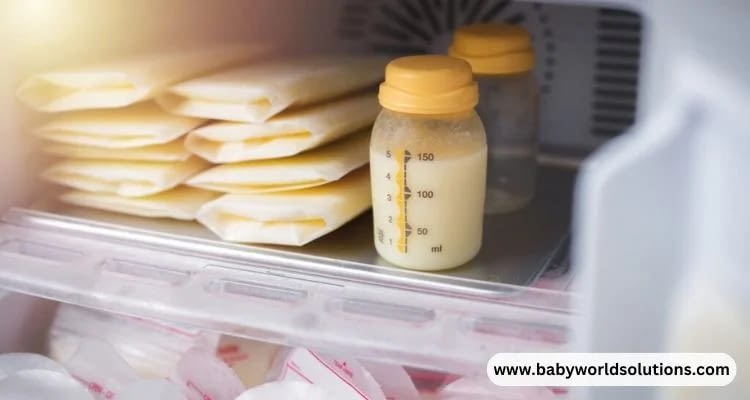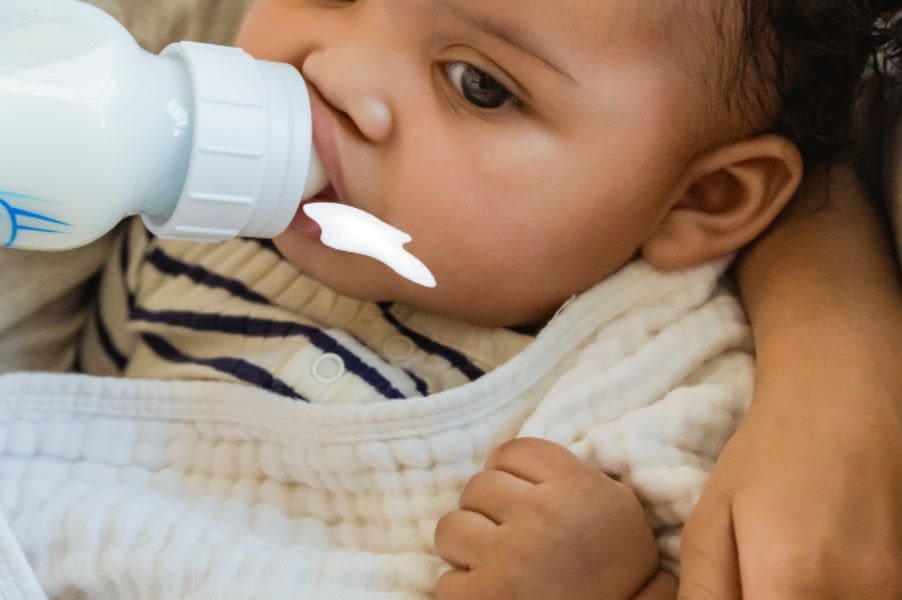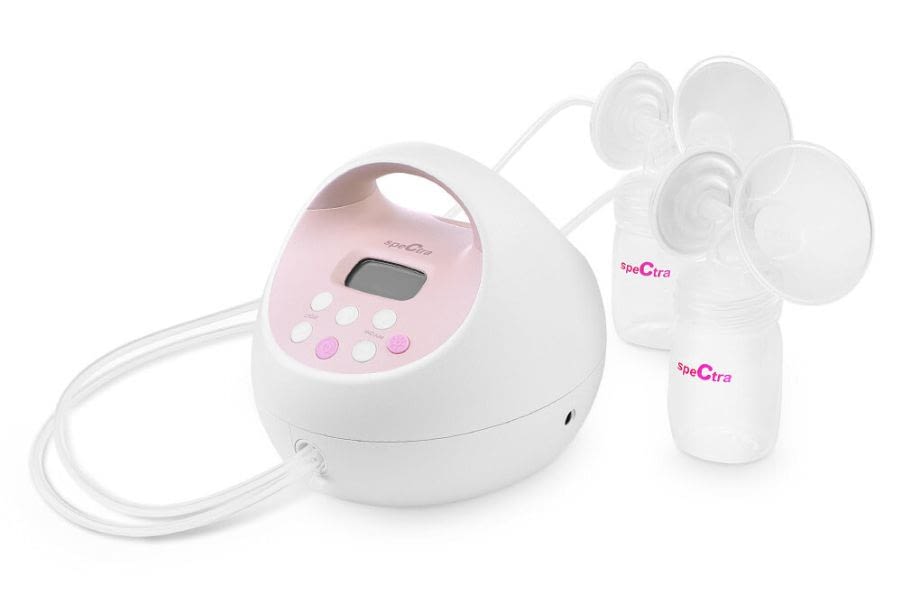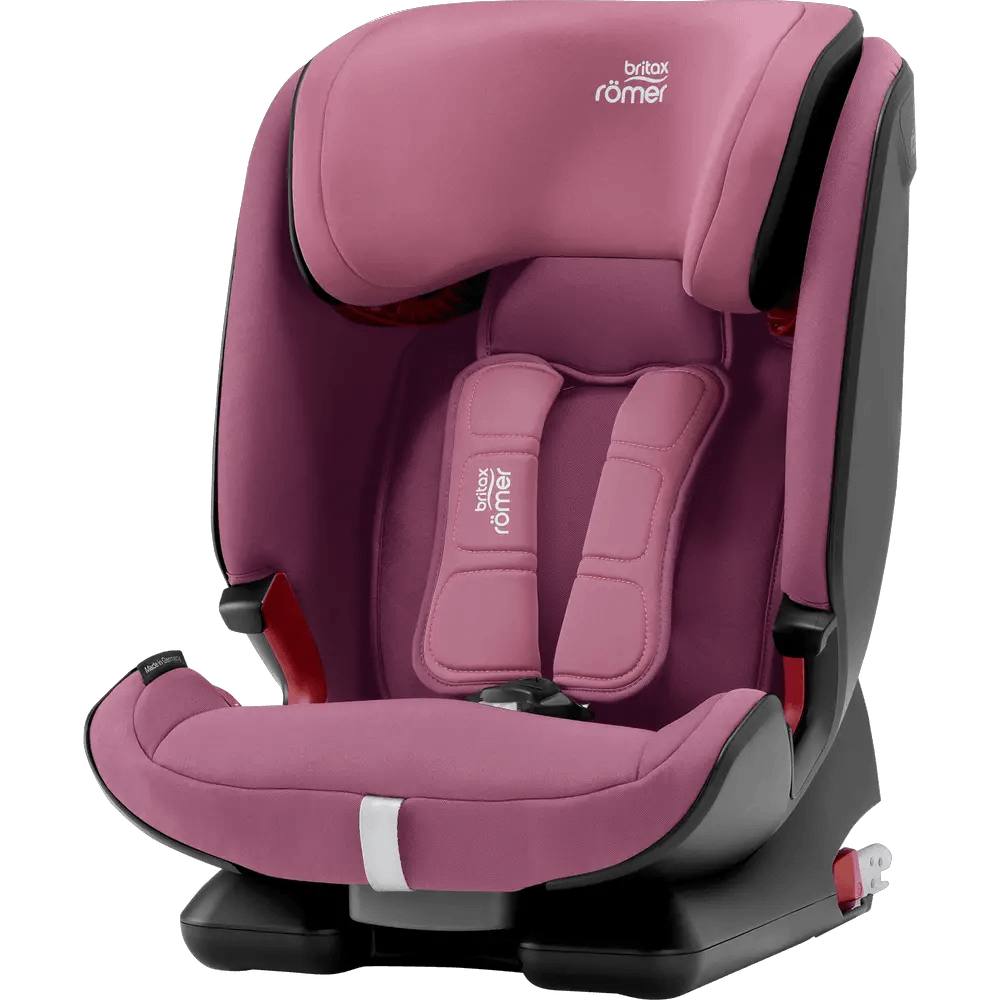Breast milk is a precious commodity for breastfeeding mothers. It is not only a source of nutrition for their little ones but also contains antibodies and other protective substances that help prevent illnesses.
As a new mother, you may have numerous inquiries about breast milk storage. In this article, I will address the question, “Can warmed breast milk be refrigerated again?” and provide comprehensive milk storage guidelines to ensure your baby gets the best care possible.
Everything You Need to Know About Milk Storage Guidelines for Breastfeeding Mothers
Breast milk is the best nourishment for your little one, and you want to ensure you storing and handling it properly to ensure its quality and safety. Therefore, what should you do with warmed breast milk that your baby has not consumed?
Related: How Long Does Breast Milk Last After Warming?
Once breast milk is heated, can it be refrigerated?
It is safe to refrigerate warmed breast milk again, per the American Academy of Pediatrics. However, new moms must ensure it has been included for an extended period.
General rule: How long can warmed breast milk be refrigerated again in the fridge?
The breast milk should be refrigerated within 2 hours after pumping or expressed. However, if the milk has been in a warm room for over two hours, you should discard it.
Moreover, if your baby has started feeding from the bottle, you shouldn’t refrigerate it either, even if you warmed it up only recently.
Can you thaw and refreeze breastmilk?
The breast milk that has been frozen and thawed out should also be used within 24 hours from when it’s been thawed. Refreezing human milk completely thawed out is never a good idea, as it can decrease its nutritional value and quality.
Another thing you can notice is that some babies might need to be more fond of the taste of previously frozen milk that has been refrigerated after being warmed up. The lipase enzyme in the milk can break down the fat content in frozen milk and make it taste sour or soapy.
If your little one doesn’t like the taste of fridge-cold breast milk, you can try to scald it before storing milk in the fridge. Scalding is heating the milk almost to boiling point and then cooling it down quickly. It will deactivate the lipase enzymes and prevent a change in taste.

Can you refreeze partially thawed breastmilk?
No, partially thawed breast milk should not be refrozen.
According to the Harvard Medical School Family Health Guide, “refreezing breast milk that has already been thawed can reduce its vitamin content and compromise bacterial quality.”
If breast milk has been thawed wholly or partially, it should be utilized immediately or refrigerated for 24 hours. If unused, it should be discarded after that.
And, even if you store it properly in the refrigerator, breast milk can eventually become too old and should not be consumed after five days of storage.
Ways to use Leftover Breast Milk
To ensure your baby gets the best nutrition possible, use freshly expressed milk immediately. To ensure that your baby receives the maximum benefits from storing breast milk and to avoid the risks of refreezing, it is advisable to use the oldest milk first and discard any remaining milk stored in the refrigerator for more than five days.
There are various ways to ensure your baby receives all the essential nutrients from breast milk while minimizing the risks of refreezing. Mix it with formula or include it in your baby’s food.
Read Also: Can You Microwave Baby Bottles?
Reasons why can’t you refreeze breast milk?
Yes, breast milk can be refrigerated again after it is warmed. Although it is an option, refreezing could be better due to the associated risks. So, what happens if you refreeze breast milk? Here are ten reasons why you shouldn’t refreeze thawed breast milk:
- Refreezing affects the nutrients in breast milk—it can make the milk less nutritious than it originally was.
- Refreezing changes the taste of breast milk; it is unpalatable for babies.
- Bacterial growth in already thawed breast milk increases when it is refrozen.
- Thawed and then refrozen breast milk may contain ice crystals, which can cause pain and tissue damage to your baby’s throat and esophagus if swallowed.
- Refreezing can cause the separation of fats from other components of breast milk, which could lead to digestive upset or allergies in your baby.
- Thawing and refreezing breast milk may result in bacterial contamination, as bacteria may enter the bottle during these processes.
- Thawed and refrozen breast milk may lose some of its protective properties against infection that it had in its original form.
- Refreezing is not ideal for safety reasons and requires more energy and resources, which can be expensive and inconvenient over time.
Therefore, if possible, use freshly expressed breast milk instead of refreezing already thawed milk.

Can you save breast milk after it has been heated?
Yes, warmed breast milk can be saved after it has been heated. However, parents must take caution when doing so.
When storing heated breast milk, always label the container with the date and time it was expressed and heated, and use the oldest milk first.
Can you put warmed breast milk back in the fridge? If you plan on storing untouched warmed breast milk in the refrigerator, maintain a temperature of 4°C (40°F) or lower and use it within 72 hours of reheating. Any remaining breast milk should be discarded after this time.
It is important to note that it should not be reheated more than once as harmful bacteria could begin to grow.
How long can refrigerated breast milk be left out at room temperature? It is not best to store breast milk at room temperature for more than four hours.
Things To Avoid When Warming Previously Frozen Milk
Baby didn’t finish bottle of breastmilk Can I reuse it? If your kid does not finish the bottle within an hour, discard the leftover milk. Never put food in contact with saliva back in the refrigerator.
Several things should be avoided regarding warming fresh milk for a baby and how to warm breast milk and how to use refrigerated breast milk.
- One of those is not to make sure the breast milk has not been sitting at room temperature for more than an hour. If it has, discard it and do not re-refrigerate.
- After warming the milk, allow it to cool at room temperature for a few minutes, transfer it to a clean container, and refrigerate it.
- Knowing that this thawed human milk can only be re-warmed once is essential! Once the freshly expressed breast milk has been re-warmed, it must be used immediately and not refrigerated again.
- Use caution when warming breastmilk in the microwave and constantly stir it thoroughly before feeding it to your baby.
- Another thing to avoid is not leaving thawed human milk unattended, which can be a safety hazard and lead to bacterial growth.
- Warming up frozen breast milk for a baby does not need to be complicated; taking the necessary precautions to keep your baby safe and healthy is essential.
Milk storage guidelines: Guidelines For Storing The Freshly Expressed Breast Milk
Storing is of utmost importance for new mothers, as it helps maintain the quality and safety of breast milk. Here is the basic human milk storage information.
- Refrigeration: Pumped milk should be stored at or below four °C and kept for up to 4 days.
- Freezing: Human milk can be frozen at -20°C or below and stored for 6 months. Also, keep a gap of approximately one inch at the top of the container when freezing breast milk, as the breast milk expands during the freezing process.
- Room Temperature: Breast milk can be kept at room temperature, which should not exceed 25°C, for up to 4 hours.
- The type of container used for milk thawing is essential in maintaining the milk’s quality and safety. The following are the recommended containers for milk storage:
- Glass Containers: Glass containers are preferred over plastic containers as they do not pose any health risks and are chemical-free.
- BPA-Free Plastic Bags: Freeze breast milk in them to ensure their safety and quality by checking that they are BPA-free.
- Breast Milk Storage Bags: They are designed explicitly for storing human milk and have a leak-resistant double zipper seal.
- Always label the food container or storage bag with the date the milk was pumped.
- Store it in the back of the refrigerator or freezer, where it is the coldest and most stable temperature.
- Never add warm breast milk to previously cooled or frozen breast milk, as this can cause bacteria to form in the stored milk.
- Place the milk on a flat surface to prevent the milk from leaking and contaminating other items in the refrigerator.
Combining milk expressed from different pumping sessions into one container
When collecting breast milk from multiple pumpings, following the proper guidelines for combining milk expressed from different sessions into one container is essential. It will ensure that your baby receives the correct nutrients and prevent contamination.
- The first step when combining breast milk is to ensure the containers used are clean and sanitized. All bottles, nipples, and storage containers should be washed with hot soapy water and allowed to air dry before use. If you prefer a dishwasher, complete the cycle before using the equipment for breast milk expression.
- Once all the containers are clean and ready, separating the milk from each pumping session into separate containers is essential. It will help maintain each batch’s integrity and prevent contamination from occurring.
- Additionally, labeling the containers with the date that it was expressed can be helpful for tracking purposes.
- When all of the milk has been collected in separate containers, combining them in one larger container is safe. Ensure that your container is clean and free of contaminants before adding any milk.
- Gently swirl the containers together to combine all the milk, taking care not to spill any of it. Once the milk has been combined, it can be stored according to your needs and preferences.
Conclusion: Once breast milk is heated can it be refrigerated?
As a new mother, you want to provide the best and safest way of feeding your little one. Following these simple milk storage guidelines is essential to ensure your breast milk remains safe and nutritious for your baby’s consumption.
These guidelines may seem overwhelming initially, but with some practice, you’ll soon store and handle breast milk like a pro. I highly recommend seeking advice from a lactation consultant or pediatrician if you have any questions or concerns regarding breastfeeding or storing breast milk. They have the expertise and knowledge to guide you in the best possible way.
1 Visit today





